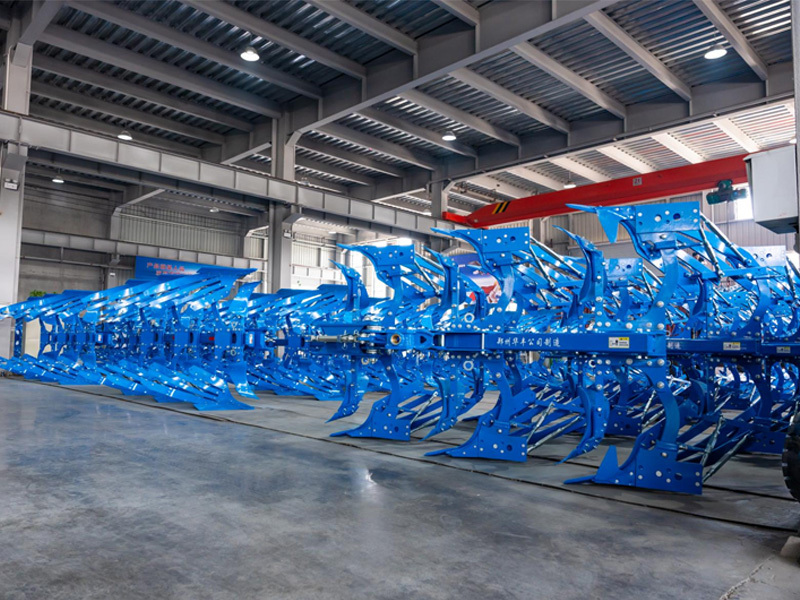Reversible plow: A highly efficient tool for modern agricultural tillage
2025-06-20
The reversible plow is a core tillage machine used with tractors. It uses a double distributor to control the lifting and lowering of the plow and 180-degree turning, enabling two-way alternating operation.

The reversible plow is a core tillage machine used with tractors. It uses a double-acting distributor to control the lifting and 180-degree reversal of the plow, enabling bidirectional alternating operation. Its core structure includes a suspension frame, hydraulic reversing mechanism, screw-adjustable land wheel, plow frame, and plow body. It is suitable for 50-100kW diesel tractors, with a working width of 90-150 cm and a plowing depth of 15-35 cm. Typical models, such as the 235 reversible three-furrow plow, weigh 400-590 kg and are suitable for medium-sized tractors; heavy-duty models, such as the 330, use a double-layer plow wall structure, weigh over 1000 kg, and require ≥88kW power support.
Technical Characteristics and Advantages
Bidirectional Hydraulic Reversal
The plow frame is vertically reversed by a hydraulic cylinder, taking ≤30 seconds per reversal, saving time and fuel.
The heavy-weight depth-limiting wheel automatically changes position, ensuring constant plowing depth with an adjustment accuracy of ±1.5 cm.
Modular Design and Efficient Maintenance
Easily damaged parts such as plow points and plow legs are assembled with bolts and can be replaced individually, reducing maintenance costs by over 60%.
The plowshare is made of 65Mn high-manganese steel through a heat treatment process. The vertically inclined plow point forms a 45° angle with the traction direction, reducing soil resistance and significantly improving soil turning and breaking.
Adaptability to Multiple Scenarios
Equipped with a three-stage width adjustment mechanism (21°/24°/28°), the plowing width can be adjusted according to soil resistance, increasing efficiency by 30%.
The hydraulic system reduces the turning radius at the field edges to 4 meters, and the lateral tilt angle adaptability during hillside operation reaches 15°, breaking up the plow sole and increasing the plowing depth from 18 cm to 25 cm.
Environmental Protection and Increased Production
Buries surface weeds 20 cm below the surface, inhibiting weed growth, reducing soil bulk density by 0.3 g/cm³, and increasing nutrient and water content.
The surface is leveled to ±3 cm after plowing, with good coverage, which is beneficial for deep burial and decomposition of crop residues and weeds to improve soil fertility.
Previous:
Related Blog
Autumn is a harvest season, but also a sowing season. While many farmers may have nearly completed their autumn plowing, many others may still be in the process. Whether you have finished or not, today we will discuss rotary tillage and plowing during the plowing process. How to choose the right tillage method? Hopefully, after reading this, you will have less confusion and more understanding.
From plowshare to plow blade: A comprehensive interpretation of the magical power of moldboard plows
The moldboard plow, a marvelous tool in the agricultural field, has played an indispensable role in farmland since its inception. From ancient plowshares to modern, highly efficient plow blades, the evolution of the moldboard plow has witnessed the advancement of agricultural technology. It has not only improved farming efficiency but also laid a solid foundation for stable and high yields of crops. Next, let's step into the world of moldboard plows and fully understand their amazing power.
Contact us
-
Phone:+86-0371-68111999
-
Phone:+86-13526676666
Email:zzkefeng@163.comAddress: Shangjie District, Zhengzhou City, Henan Province


